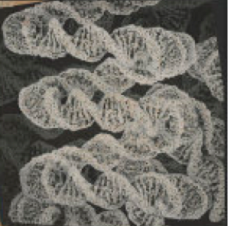 Tomorrow starts the US Open here at Chambers Bay Golf course in Tacoma, Washington about 60 minutes south of Seattle. What, you might ask, does that have to do with anything related to family history? A lot–especially when you realize it means that family members are visiting and I have a problem which may be able to be solved using DNA!
Tomorrow starts the US Open here at Chambers Bay Golf course in Tacoma, Washington about 60 minutes south of Seattle. What, you might ask, does that have to do with anything related to family history? A lot–especially when you realize it means that family members are visiting and I have a problem which may be able to be solved using DNA!
I have decided to try to solve the identity problem of the grandfather of my husband. Many steps are needed just to get to the end point. First, I need to define my research question [done], develop a testing plan [done with the help of my friend, Karen, in Chicago] and then implement the plan.
So, tomorrow morning, two of the brothers will be swabbing and spitting to help me identify (hopefully) the name of the father of their mother.
Of course, it’s not that easy. When the results come back, they will be analyzed. They are taking the autosomal DNA tests which look at the other 22 chromosomes. This type of test can reliably identify kinship back about 3-5 generations. While the test is accurate that far in the past, it is also possible there will be no matches. Then, we will wait until some descendant of the father of Molly, decides to test.
So, in my lay person’s terms this is what I am doing:
- by testing the siblings of my husband (there are 4 sibs) we will be able to identify patterns which will show their father, Steve, and mother, Molly. The test could also show, tho’ not predicted, if there is a non-paternity event at that generation.
- Steve was tested before he died for Y-DNA and mtDNA. I need to test his autosomal, so we can identify which part of the pattern of code is attributable to Steve. I need to get the company to run the autosomal test on Steve’s data.
- Molly’s DNA is composed of DNA from her mother and her (unidentified) father. I am hoping to get Molly’s half-brother to test. If so, we might be able to clarify which parts of the makeup of the Molly’s genome is attributable to the mother, Anna, and by default, what is attributable to the unknown father.
- We then “remove” the pattern that is attributable to Steve and Anna and what stands alone is that of the unknown father.
- Then, we check to see if there is anyone who matches the unknown father’s DNA Hopefully, or eventually, there will be a match for the unknown father. We will then try to find our common ancestor using the “old-fashioned” method of genealogy–doing the traditional paperwork!
We will see what happens. It might take years. I still have to get the half sibling to agree. I’ll keep you posted.
Happy Hunting!
Jill
What I have done since the last posting: cleaned house in anticipation of company, and worked on the SGS Bulletin but didn’t get far enough along. It won’t get published until the end of July; attended the Puget Sound-APG meeting where Claudia Breland did an excellent job of presenting on self publishing for commercial purposes. I have been doing some additional tax record research on my Swedes. That’s been fun and enlightening. And I have worked sporadically on my proof argument for BCG.
Photo from the Collection of Charles and Rae Eames, Library of Congress. Used under the fair use doctrine for scholarship and non-commercial use. This is not real DNA but rather a design in a double helix pattern done by the famous architects/designers, the Eames’s.
